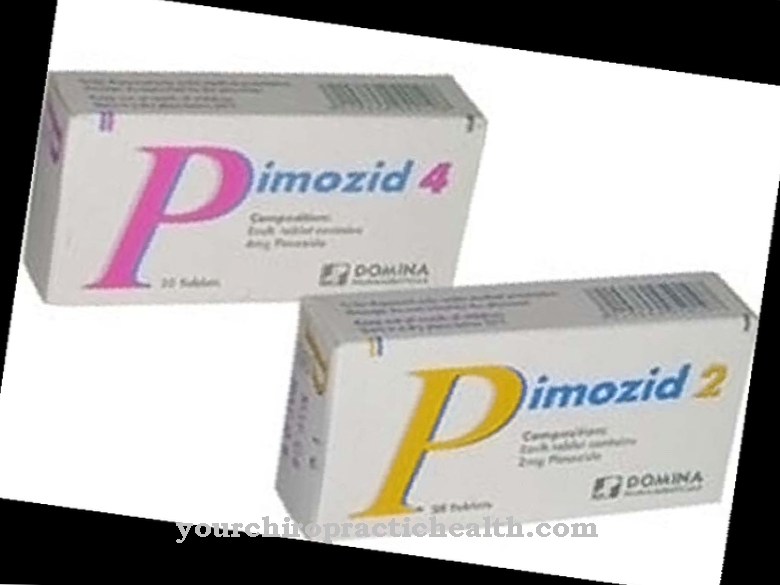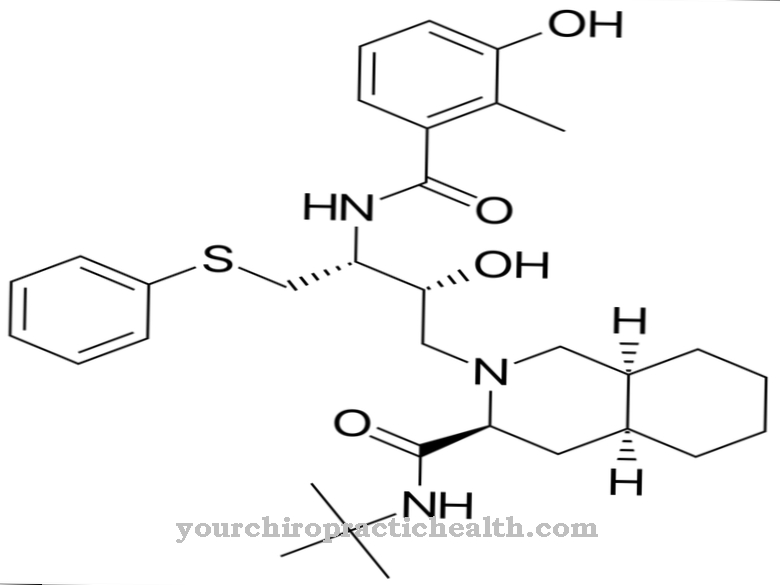Bacitracin is an antibiotic that inhibits the cell wall synthesis of some bacteria. The drug has been shown to be effective against gram-positive bacteria and against Neisseria.
What is bacitracin?

Bacitracin is a drug from the class of polypeptide antibiotics. Antibiotics are drugs that are used to treat bacterial infectious diseases. Together with agents against diseases caused by protozoa, against viruses, against worms and against fungi, they form the group of anti-infectives.
Polypeptide antibiotics act directly in the bacterial cell membrane. In addition to bacitracin, polymyxins and tyrothricin also belong to the polypeptide antibiotics.
The active ingredient of Bacitracin is extracted from the Bacillus subtilis pathogen. Bacillus subtilis is a bacterium in the Bacillaceae family.
Pharmacological effect
Bacitracin affects the cell wall structure of certain bacteria. The cell wall of bacteria is made up of organic polymers. It is located outside of the cell plasma membrane. The polypeptide antibiotic forms a complex with undecaprenyl diphosphate. Undecaprenyl diphosphate is a carrier lipid that is involved in the cell envelope synthesis of gram-negative and gram-positive bacteria. The formation of the complex inhibits another lipid carrier, bactoprenol. The bacteria need this substance for the transport of sugar molecules that are used for the bacterial murein layer.
Murein is also known as a peptidoglycan. The peptidoglycan shell serves to stabilize the bacteria. It creates a counterbalance to the osmotic pressure that can be found inside the bacterium. If the murein layer is dissolved or cannot build up properly, the bacterium will burst.
Bacitracin is therefore a bactericidal antibiotic. Bactericidal antibiotics can trigger the cell death of pathogens. Bacteriostatic antibiotics, however, only inhibit the growth and reproduction of bacteria. However, they cannot kill dormant pathogens.
Medical application & use
Bacitracin is only available in the form of an ointment. It is applied to the infected areas of the skin. Indications for the use of bacitracin are infections with gram-positive pathogens. Gram-positive pathogens are bacteria that can be stained blue using the so-called Gram stain. In contrast to gram-negative bacteria, gram-positive bacteria have a pronounced peptidoglycan layer made of murein. They do not have an additional outer cell membrane.
Well-known gram-positive pathogens are staphylococci and enterococci. Staphylococci are spherical bacteria that can reproduce both aerobically and anaerobically. The staphylococci include pathogens such as Staphylococcus epidermidis, Staphylococcus aureus, Staphylococcus capitis or Staphylococcus hominis. Enterococci are also known as group D streptococci. They occur in large numbers in the intestines of animals and humans. Enterococci are generally not very pathogenic. However, they are often involved in mixed infections.
Infections caused by enterococci or staphylococci and treated with bacitracin include infections of the external ear. With such otitis externa, the skin in the area of the external ear canal is inflamed. Bacitracin is also used as an eye ointment for inflammation of the eye. Sinus infections can also be treated with bacitracin. If necessary, the ointment can also be applied prophylactically to wounds after operations. This can prevent infections.
Risks & side effects
Bacitracin must not be used in viral infections, fungal infections, or tubercular infections. Ear infections associated with perforation of the eardrum are also contraindications. Ulcerations on the cornea and stroma injuries are also contraindications.
When using bacitracin, local reactions in the form of allergic contact eczema can occur. Allergic contact eczema is inflammation of the skin caused by a type IV allergy. Contact with the allergen in the ointment sensitizes the patient's T lymphocytes. When the antibiotic ointment is reapplied, the inflammatory skin lesion forms with a delay of one to three days.
The acute form has four stages. The affected areas of the skin are initially very red and swollen. Then vesicles and pustules form. These usually burst and ooze very quickly. After drying out, crusts and / or scales develop from the burst blisters. With repeated irritation by the bacitracin, the eczema does not heal, but becomes chronic. Superinfection with viruses or other bacteria can be a complication.













.jpg)

.jpg)
.jpg)











.jpg)